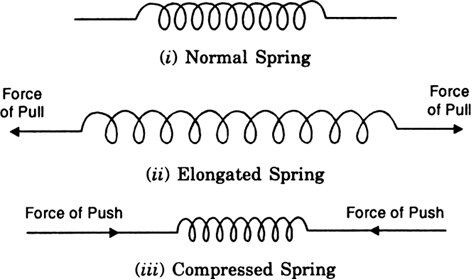Give examples to show that balanced forces change the shape of the object on which they are applied.
When balanced force is applied on any object, it changes the shape of the object.
From the examples, we have

Fig (a). Balanced force cause change in shape.
(i) Consider a spring as shown in Fig (a).
If the string is pulled at it's two ends, the spring gets elongated. And if we push the spring at its two ends, it gets compressed. In both cases the two forces being equal and opposite, balance each other but change the shape of the spring.
(ii) When a rubber ball or an inflated balloon is pressed between the two palms, its shape changes. The forces exerted by the two palms are equal and opposite and thus balance each other. Hence, the shape of the ball changes.



